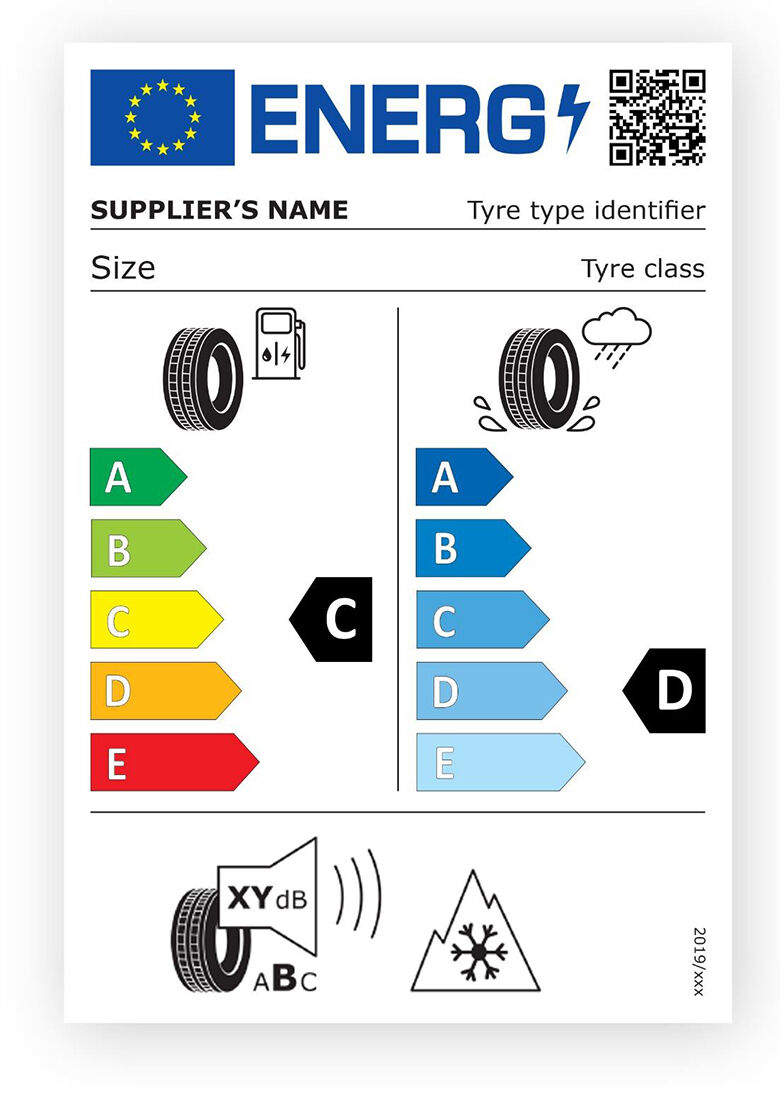Checking your tire treads
The condition of your tire tread is one indicator of your vehicle’s health. Regular checks of all four tires can help diagnose potential problems that may require professional intervention. Inspect your tires at least once a month, as well as before and after long journeys.
Signs to look out for
Tread wear bars are visible: These bars of hard rubber are designed to be visible when your tire’s tread has become worn. If these tread wear bars show up, it’s time to buy a new set of tires. If you’re not sure where they are, you’ll see a mark on the sidewall that indicates where to look.
Your tire depth gauge indicates worn treads: Under European law, your treads must be at least 1.6mm deep around the tire’s circumference. For winter tires, Goodyear recommends a minimum tread depth of 4mm. It’s a good idea to purchase an inexpensive tread depth gauge to check that your tires meet the legal minimum. Make sure you take measurements on both the inside and outside of your treads.
Small objects are lodged in the tread: It’s not uncommon for small objects to get stuck in your treads. If they’re stuck in the groove, take them out carefully, being sure not to damage the tire. If you spot something that looks as if it’s gone through the rubber, like a nail, leave it in until you can get to a garage. Otherwise you’re likely to end up with a flat tire.
Tires are worn on the outside: If you notice that your tires are worn on both of their edges, you might need to inflate them or check for leaks. Tires lose air naturally, but driving on underinflated tires uses more fuel and puts you at greater risk of accidents. Make sure you check pressure regularly. If you notice that only the front tires have worn edges, you might be taking curves and corners too quickly.
Excessive wear in the center of the tread: If the center of the tread is wearing more than the outer edges, you might have overinflated your tires. This can increase the risk of a tire blowout. Find the manufacturer’s specifications, get a pressure gauge and then deflate to the recommended pressure level.
Uneven wear across a single tire: The wear patterns on your treads can alert you to problems elsewhere on your vehicle. If you notice uneven patches of wear, or bald spots, you might need your wheels balanced or aligned. Sometimes bald spots indicate that your shocks are worn. Talk to a professional.
Uneven wear across the tire footprint: Your tires won’t wear out at the same rate. The front of your vehicle carries the engine and does most of the steering work, so tires on your front axle will wear out more quickly. If they seem to be wearing more than normal, you should have your suspension checked. If wear is greater on one side of the vehicle than the other, it might be time for an alignment.
Sawtoothed pattern on tire edges: If you notice that your tires have a sawtoothed or feathered appearance around the edges, the likely cause is erratic rubbing against the road. That’s a sign that you may need an alignment.








